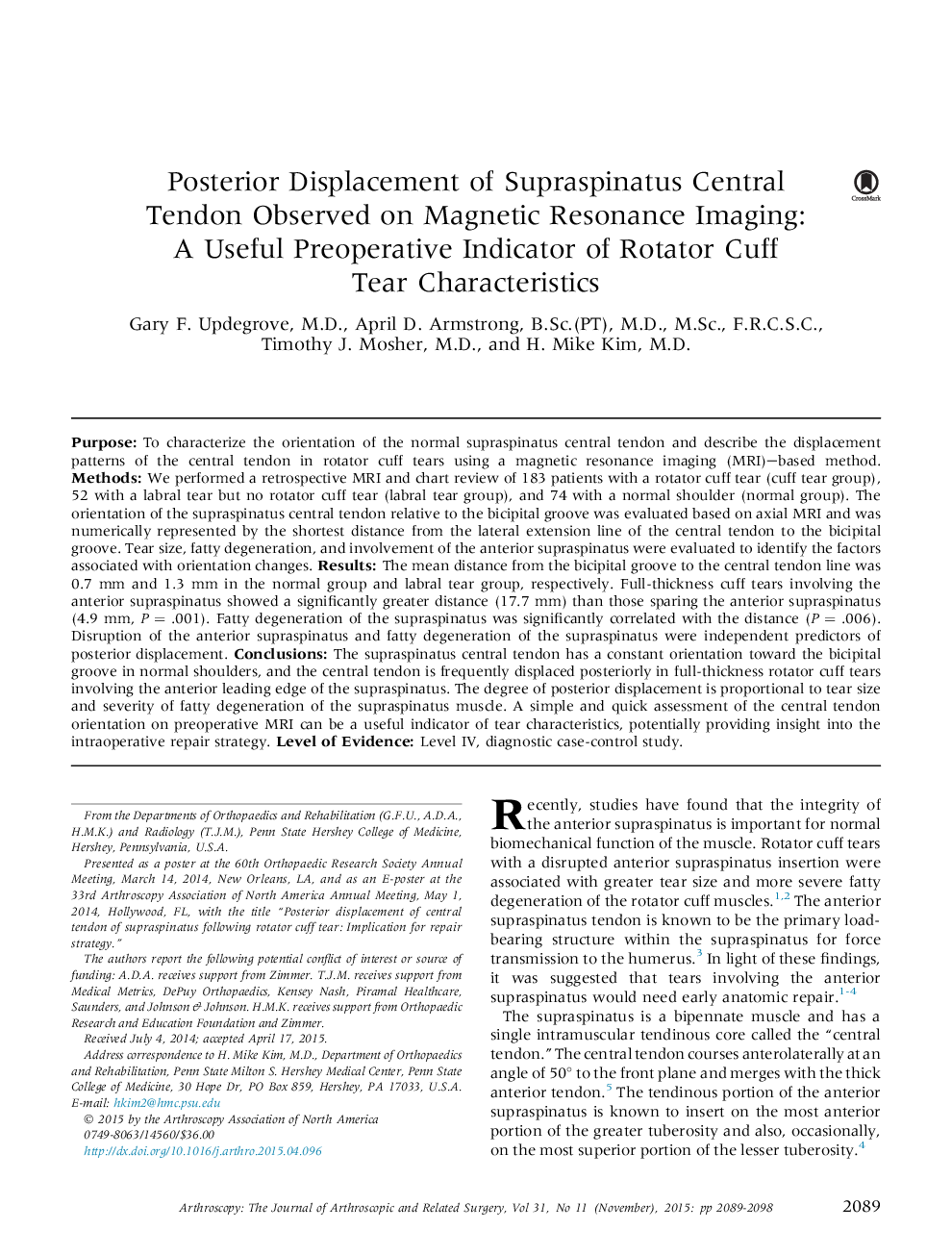| Article ID | Journal | Published Year | Pages | File Type |
|---|---|---|---|---|
| 4042119 | Arthroscopy: The Journal of Arthroscopic & Related Surgery | 2015 | 10 Pages |
PurposeTo characterize the orientation of the normal supraspinatus central tendon and describe the displacement patterns of the central tendon in rotator cuff tears using a magnetic resonance imaging (MRI)–based method.MethodsWe performed a retrospective MRI and chart review of 183 patients with a rotator cuff tear (cuff tear group), 52 with a labral tear but no rotator cuff tear (labral tear group), and 74 with a normal shoulder (normal group). The orientation of the supraspinatus central tendon relative to the bicipital groove was evaluated based on axial MRI and was numerically represented by the shortest distance from the lateral extension line of the central tendon to the bicipital groove. Tear size, fatty degeneration, and involvement of the anterior supraspinatus were evaluated to identify the factors associated with orientation changes.ResultsThe mean distance from the bicipital groove to the central tendon line was 0.7 mm and 1.3 mm in the normal group and labral tear group, respectively. Full-thickness cuff tears involving the anterior supraspinatus showed a significantly greater distance (17.7 mm) than those sparing the anterior supraspinatus (4.9 mm, P = .001). Fatty degeneration of the supraspinatus was significantly correlated with the distance (P = .006). Disruption of the anterior supraspinatus and fatty degeneration of the supraspinatus were independent predictors of posterior displacement.ConclusionsThe supraspinatus central tendon has a constant orientation toward the bicipital groove in normal shoulders, and the central tendon is frequently displaced posteriorly in full-thickness rotator cuff tears involving the anterior leading edge of the supraspinatus. The degree of posterior displacement is proportional to tear size and severity of fatty degeneration of the supraspinatus muscle. A simple and quick assessment of the central tendon orientation on preoperative MRI can be a useful indicator of tear characteristics, potentially providing insight into the intraoperative repair strategy.Level of EvidenceLevel IV, diagnostic case-control study.
